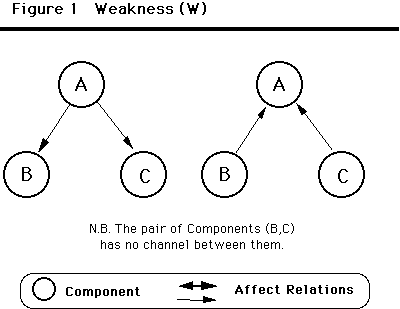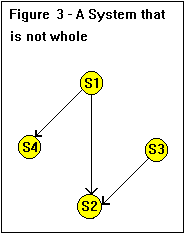 Educational Systems Theory
Educational Systems Theory Educational Systems Theory
Educational Systems Theory



Example 2 - Another example of wholeness also takes place in the classroom with a teacher, several students, and a computer. The affect relation is "makes knowledge available about the civil war." The teacher programs the computer with knowledge about the civil war. The computer makes knowledge available to the students. The teacher also makes knowledge available to the students in class. The students do reports and make knowledge available to the teacher. Both the teacher and the computer have channels to all other components and thus represent wholeness. A graphic representation of this might look like Figure 2. S1 represents the teacher, S2 represents the computer, and S3 and S4 represent students.
Example 3 - This example is actually a non-example of wholeness. This non-example involves a teacher, several students, and a parent. The affect relation is "guides learning of mathematics." The teacher guides the students in mathematics in school. Additionally, the parent guides one of the students in mathematics at home. None of the components have a channel to all other components and thus there is not wholeness. A graphic representation of this might look like Figure 3. S1 represents the teacher, S3 represents the parent, and S2 and S4 represent students.
70. If educational system wholeness increases and hierarchical order is constant, then integration increases.
103. If educational system wholeness increases, then regulation is less than some value.
113. If educational system wholeness increases and hierarchical order is constant, then efficiency decreases.
168. If educational system independence increases and wholeness increases, then state steadiness is greater than some value.
169. If educational system wholeness is greater than some value and centrality is greater than some value, then state determinacy is greater than some value.
172. If educational system automorphism increases, then wholeness decreases.
 Go to SIGGS Home Page.
Go to SIGGS Home Page.